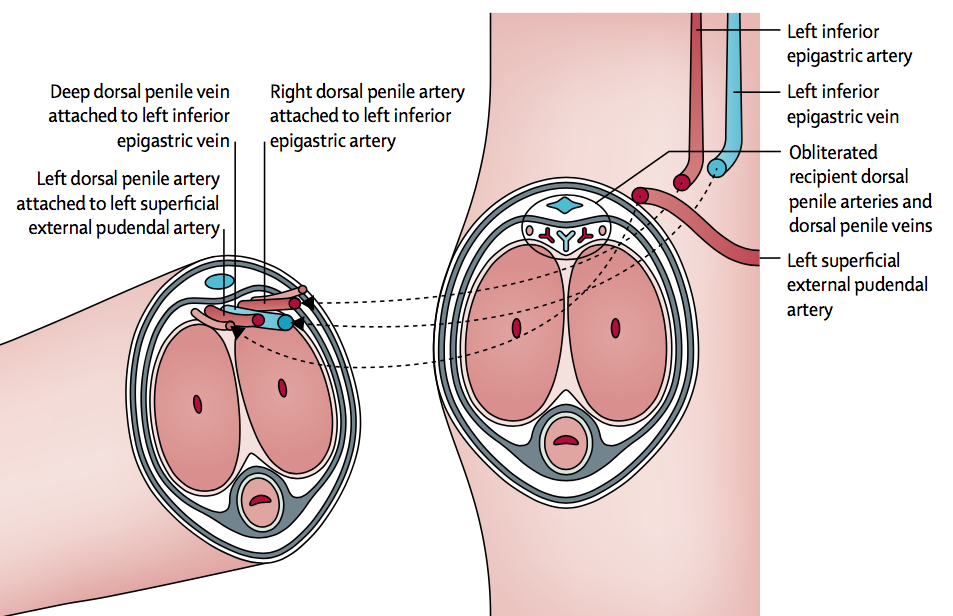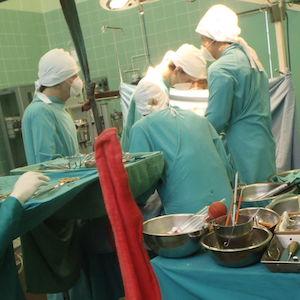In parts of Africa, it is common for older boys to undergo ritual circumcision as a passage into manhood. Unfortunately, the practice occasionally costs them their manhood.
The reason is that the person performing the circumcision is rarely medically trained. If the penis is improperly bandaged, it can become necrotic -- i.e., penile tissue can die. This leaves the man vulnerable to infections. If that occurs, the outcome could be very bad: Amputation or death from blood infection are possibilities.
If a man has his penis removed and wants a new one, there are two options available. The first is reconstructive surgery, often using an implant combined with tissue taken from his forearm to build a new penis. The problem is that the penis is hairy and ugly and doesn't function as well as the previous penis. Additionally, the surgery on the forearm may make manual labor difficult. Also, the implant can fall out.
The better option is to use a donated penis from a cadaver. A new case report, published in The Lancet, describes just such an operation, along with follow-up after two years. The researchers report that the penis is functioning normally and that the recipient has had a greatly improved quality of life.
Under the Knife
 Unlike the ritual circumcisionist, the researchers wanted to make sure everything went according to plan. So, they first practiced transplanting a penis from one cadaver to another. After they felt sufficiently knowledgeable, they performed the surgery on a living person: A 21-year-old whose penis was amputated three years prior due to gangrene following a ritual circumcision. The donor was a brain-dead 36-year-old.
Unlike the ritual circumcisionist, the researchers wanted to make sure everything went according to plan. So, they first practiced transplanting a penis from one cadaver to another. After they felt sufficiently knowledgeable, they performed the surgery on a living person: A 21-year-old whose penis was amputated three years prior due to gangrene following a ritual circumcision. The donor was a brain-dead 36-year-old.
After the surgery (a diagram of which is on the right), the patient was given medication to treat pain and to prevent infection and organ rejection. The surgery did have some complications which had to be addressed, but overall, everything went fairly well. The authors write:
The patient expressed delight on day 3 at the first sight of the transplanted organ when the dressings were removed for the first time, declaring "I want to see my penis".
Not only did he want to see his penis, he wanted to use it, too. Three weeks after surgery, while he was still in the hospital, he had his first erection. He gleefully took a picture and showed it to the researchers. (Yes, this team actually was happy to view dick pics.) The fourth week after surgery, he was discharged, and by the fifth week he had sex -- despite his doctors telling him not to. (Really, can you blame him?)
Fast forward 23 months. The patient was urinating normally, and his penis had normal touch sensation. He was also sexually active and achieving ejaculation and orgasm. The authors say he reported being happy again and, "He accepted the penis as his own" -- despite the fact that the transplanted organ had a small tuft of pubic hair he knew wasn't his.
Finally, the authors claim that this is the world's first truly successful penis transplant because all functions were restored to normal1. They are now recruiting for clinical trials.
A few weeks ago, our resident pediatrician, Dr. Jamie Wells, wrote an informative piece called "Stuff Not to Do with Your Penis." Ritual circumcision should be added to the list2.
Notes
(1) This isn't the world's first penis transplant. A man in China received a penis transplant in 2005, but it was removed because his wife didn't like it. Another psychotic man, who chopped off his own penis and ate it, had it retrieved from his stomach and reattached. Obviously, this isn't a true "transplant" because it was his own penis.
(2) Circumcision performed by a medical doctor is safe and may be desirable given its (admittedly minor) health benefits.
Source: André van der Merwe, et al. "Penile allotransplantation for penis amputation following ritual circumcision: a case report with 24 months of follow-up." The Lancet. Published online: 17-Aug-2017. doi: 10.1016/S0140-6736(17)31807-X




